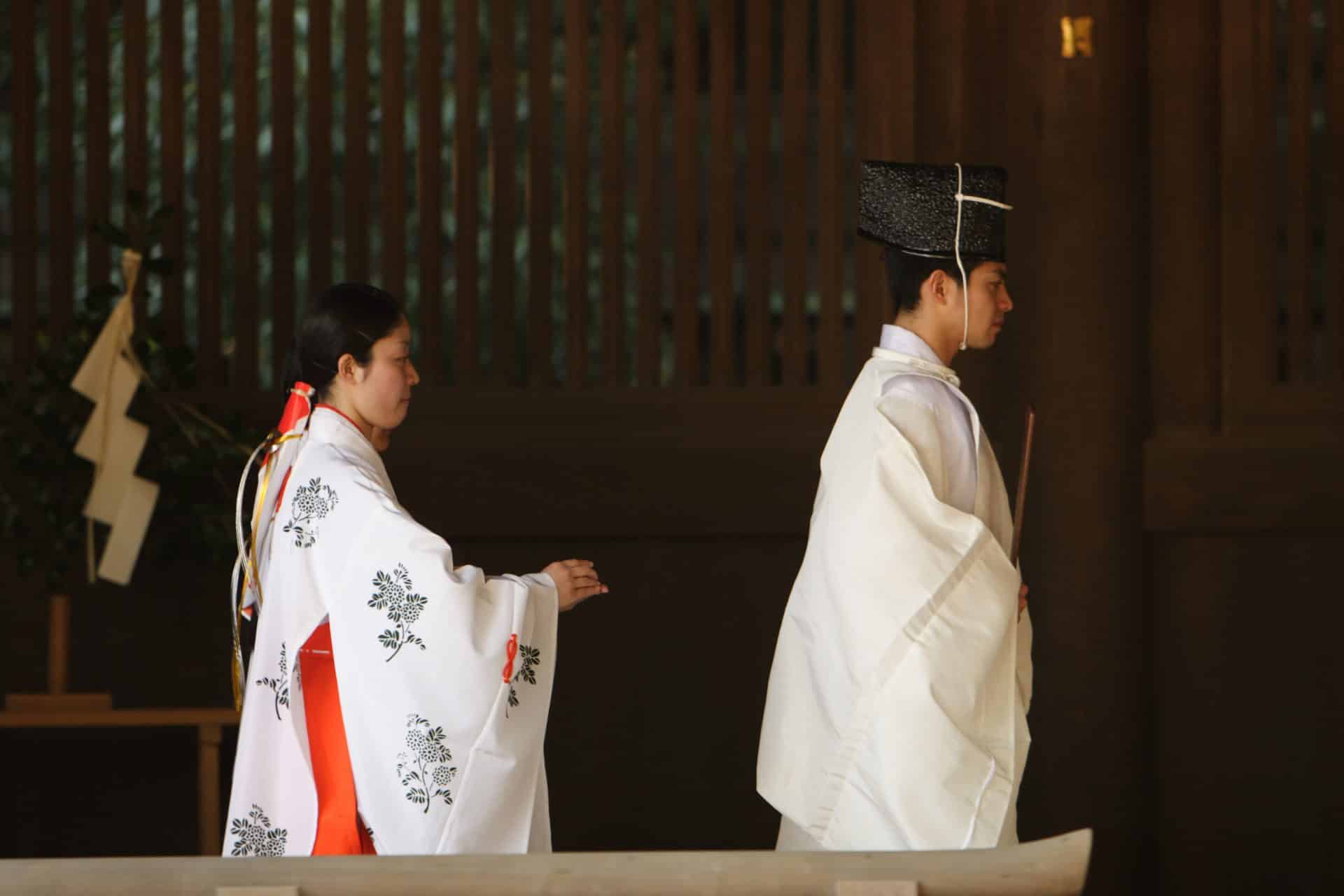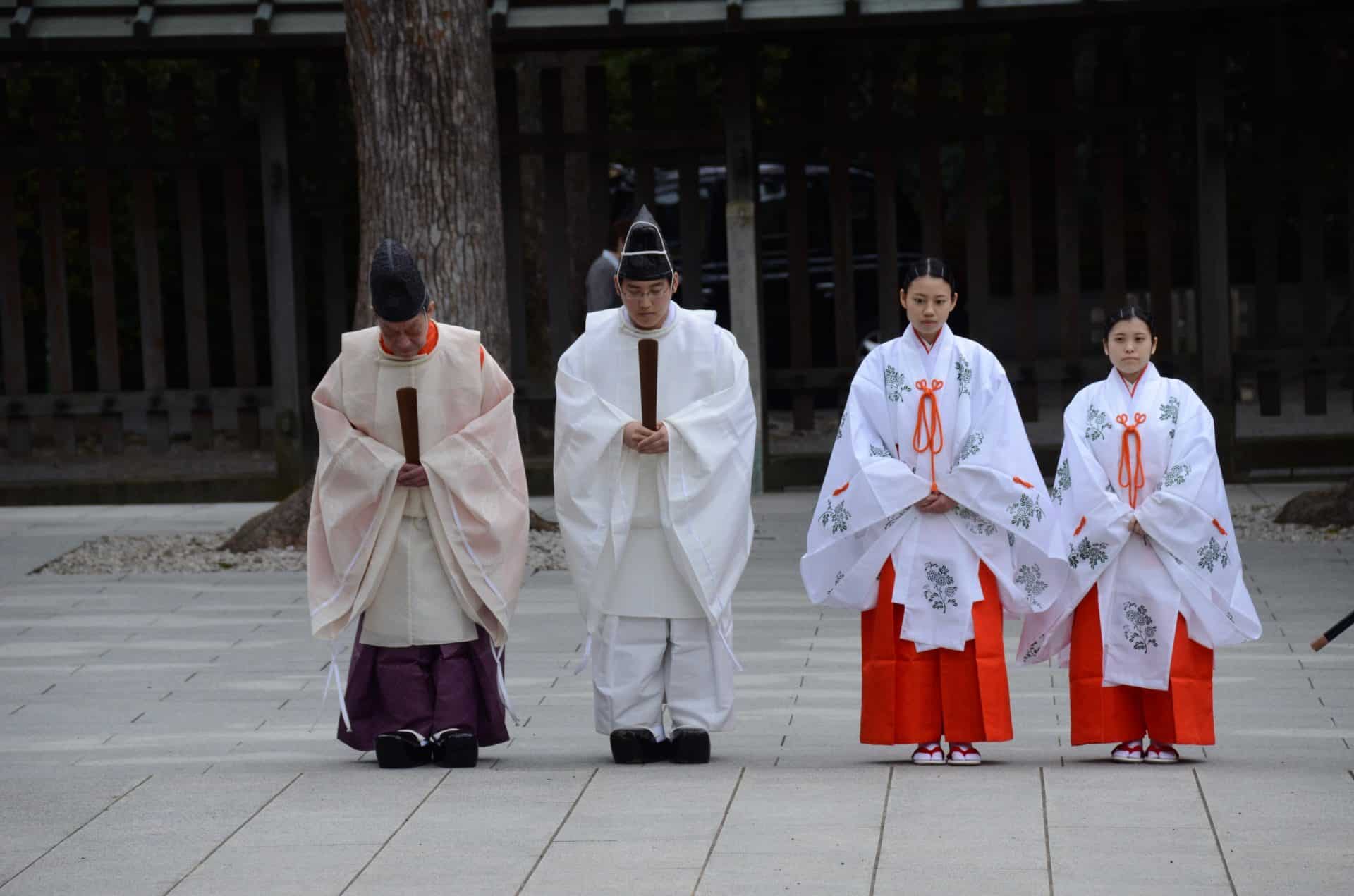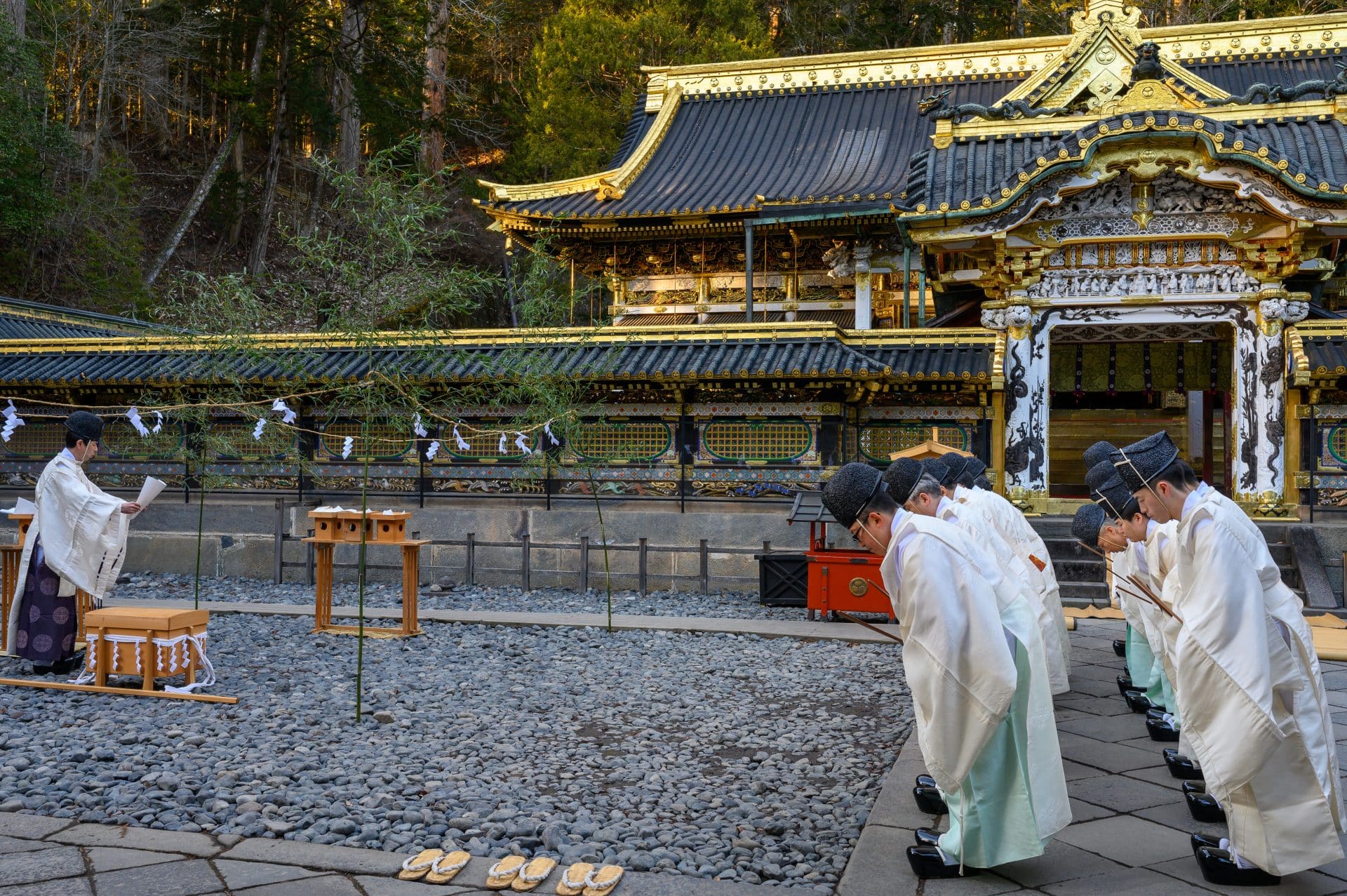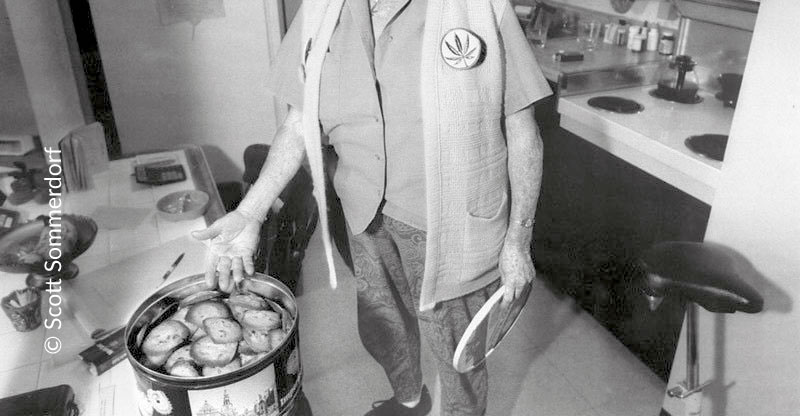In the days before World War II, a Shinshoku was usually a boy who followed in his father’s footsteps. Now, there are also many women Shinshoku. It is common for the widow of a Shinshoku to succeed her husband. It seems that at some shrines, the position remained in the same family for more than a hundred generations.
An aspiring Shinshoku follows special studies at a university or learns the role at a shrine. Once a Shinshoku, they spend their days at a Shinto shrine, supervising ceremonies or performing ritual acts. A Shinshoku lives in the service of the kami, functioning as an intermediary between people and kami. Donations from the community support the Shinshoku and maintain the shrine.
Women of Shinto: Shinshoku priestesses
Priestesses called Monoimi and Imuko were a part of Shinto up until the Edo period (1603–1867) and priestesses existed in other offices as well. However, due to the religious policies of the Meiji government (the early government of the Empire of Japan), these roles ceased to exist. In 1946, priestess roles for women in Shinto were recognized again.
This was partly due to the equal rights movement, and partly because priestesses who went to war had died in battle, or were unable to return home for a long time. This caused problems for the succession of the role within families. With the reinstating of women as Shinshoku, Shinto harked back to one of its previous traditions while simultaneously becoming more up-to-date!
There is also a supreme priestess, the saishu. She is present at the Grand Shrine of Ise Jingu, where the foremost kami Amaterasu resides. She outranks even the supreme priest, the dai-guji. In the past, the saishu was always an unmarried imperial princess. Her role was to be completely devoted to the ceremonies at the shrine.











